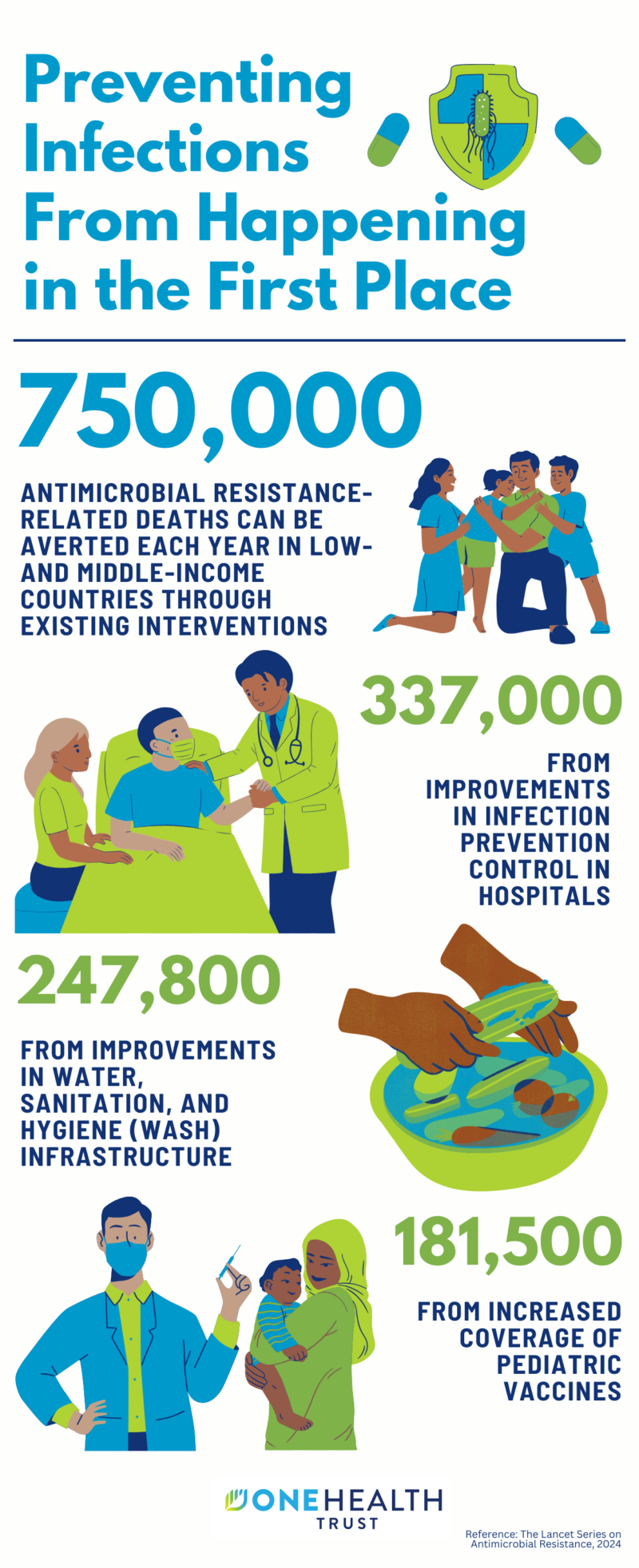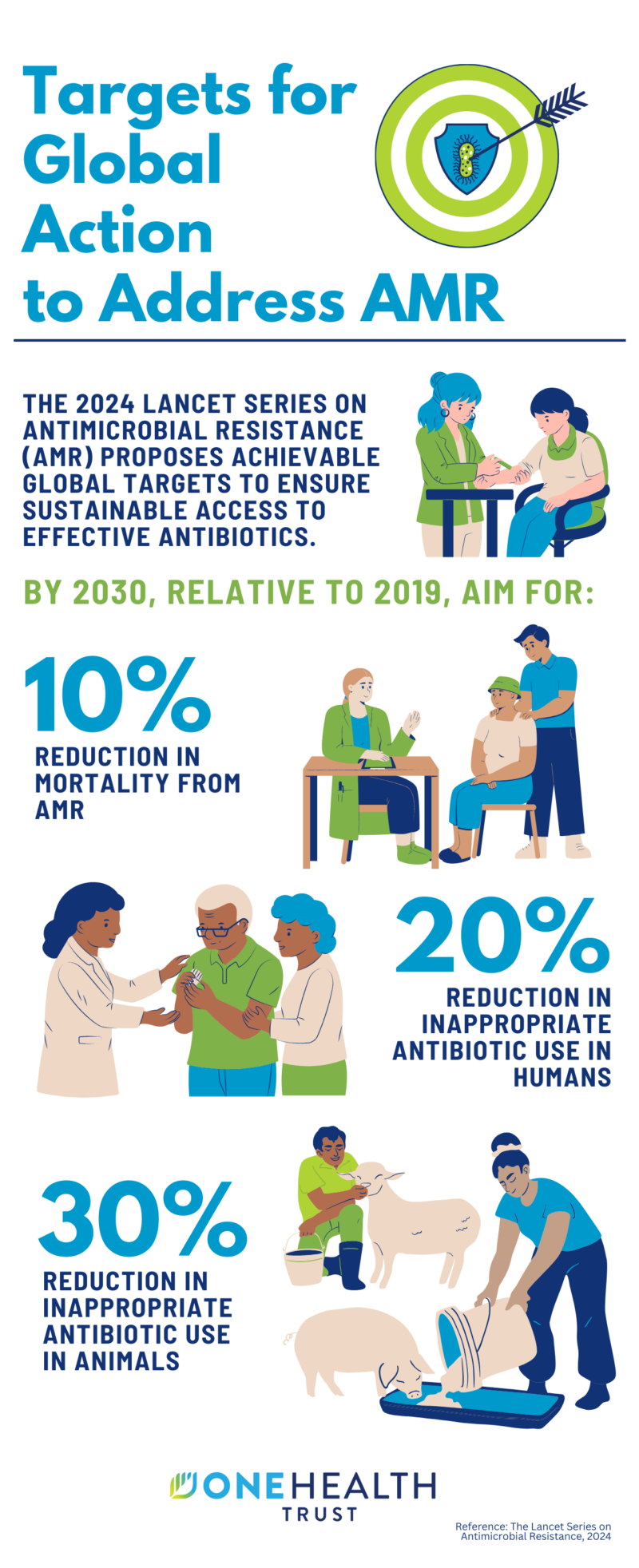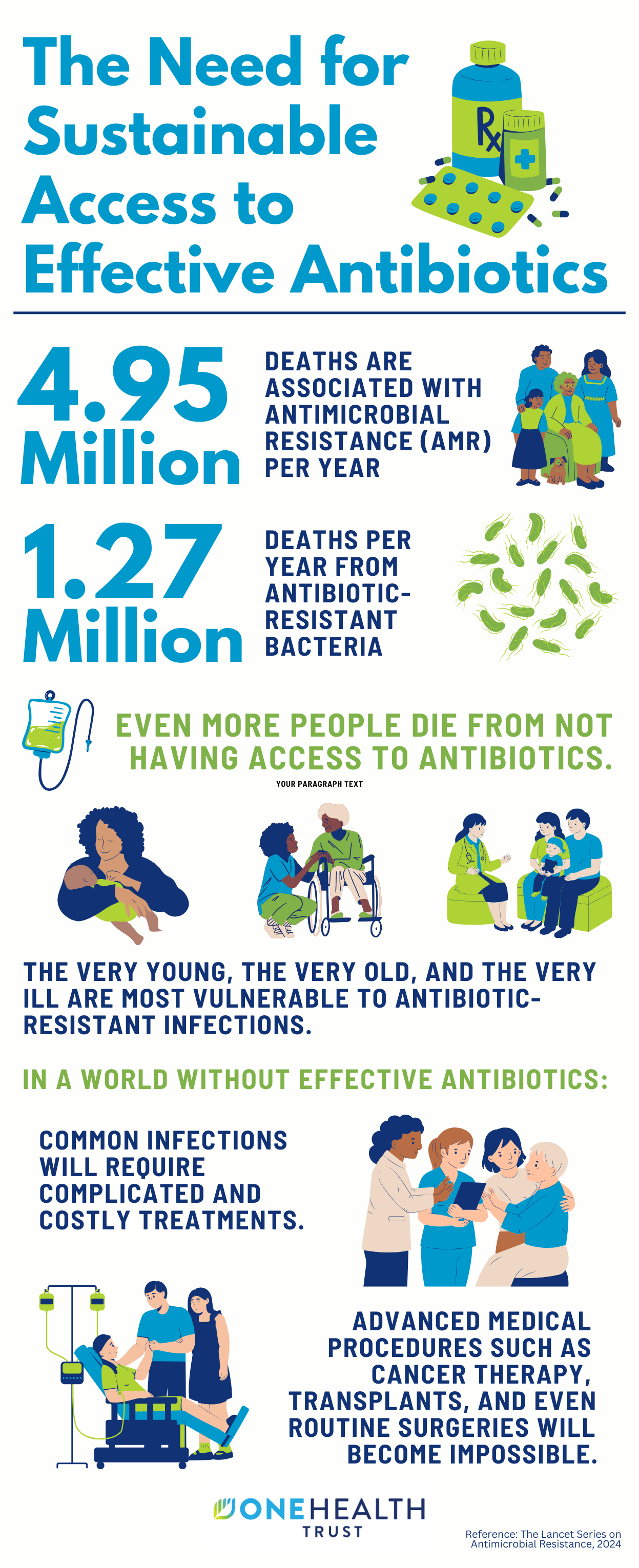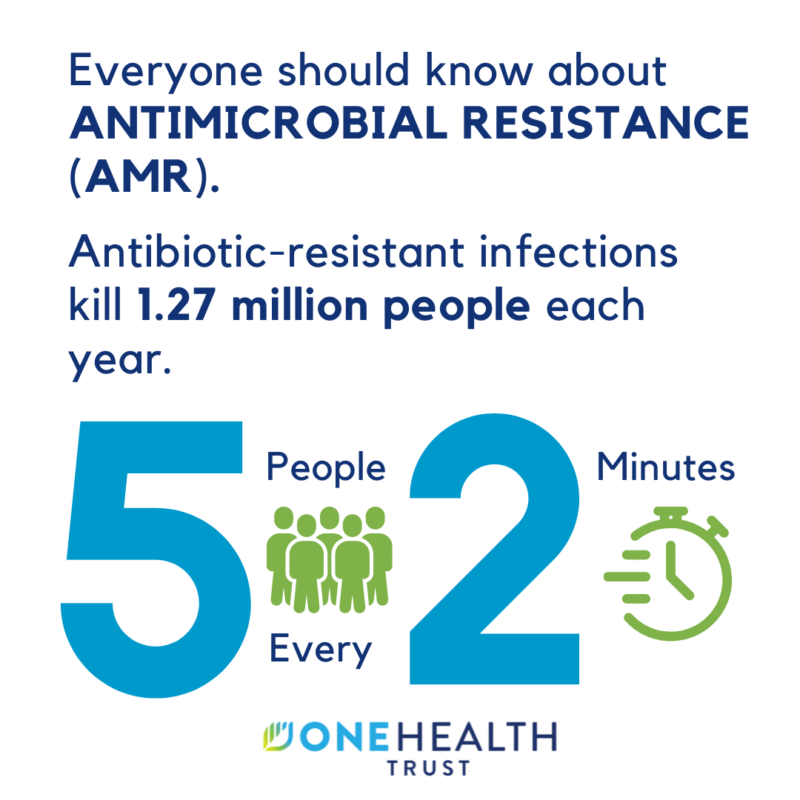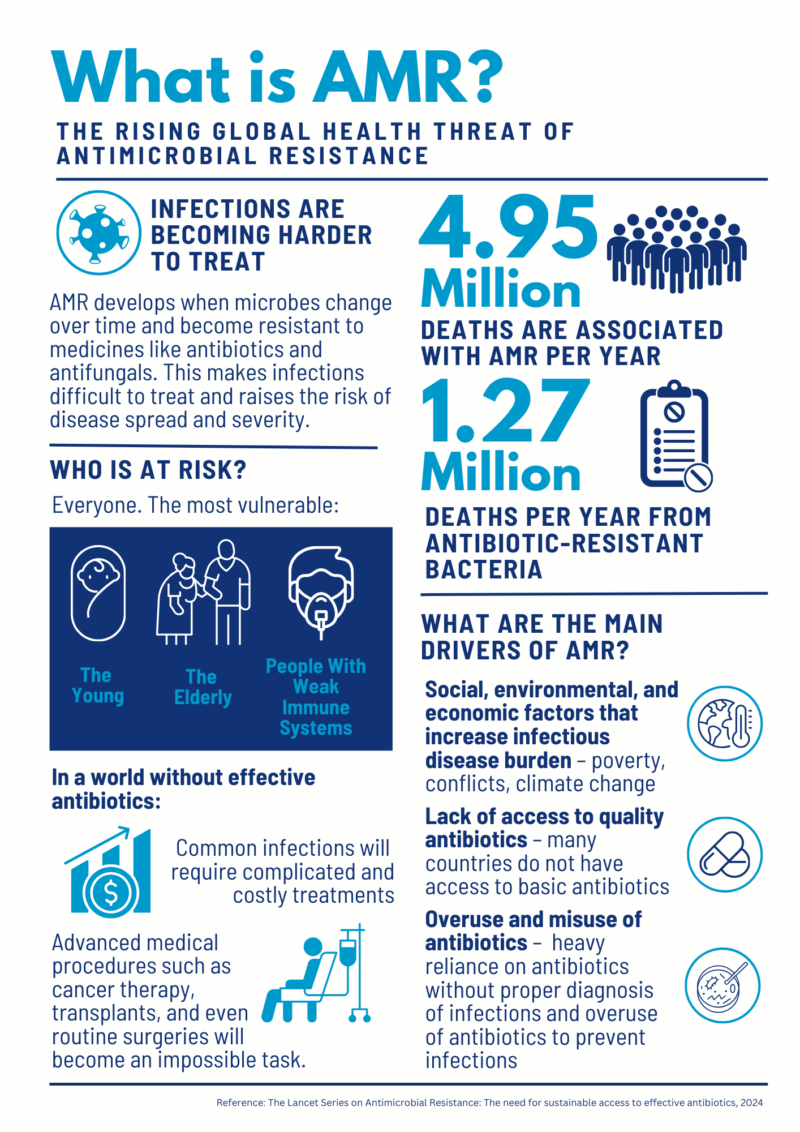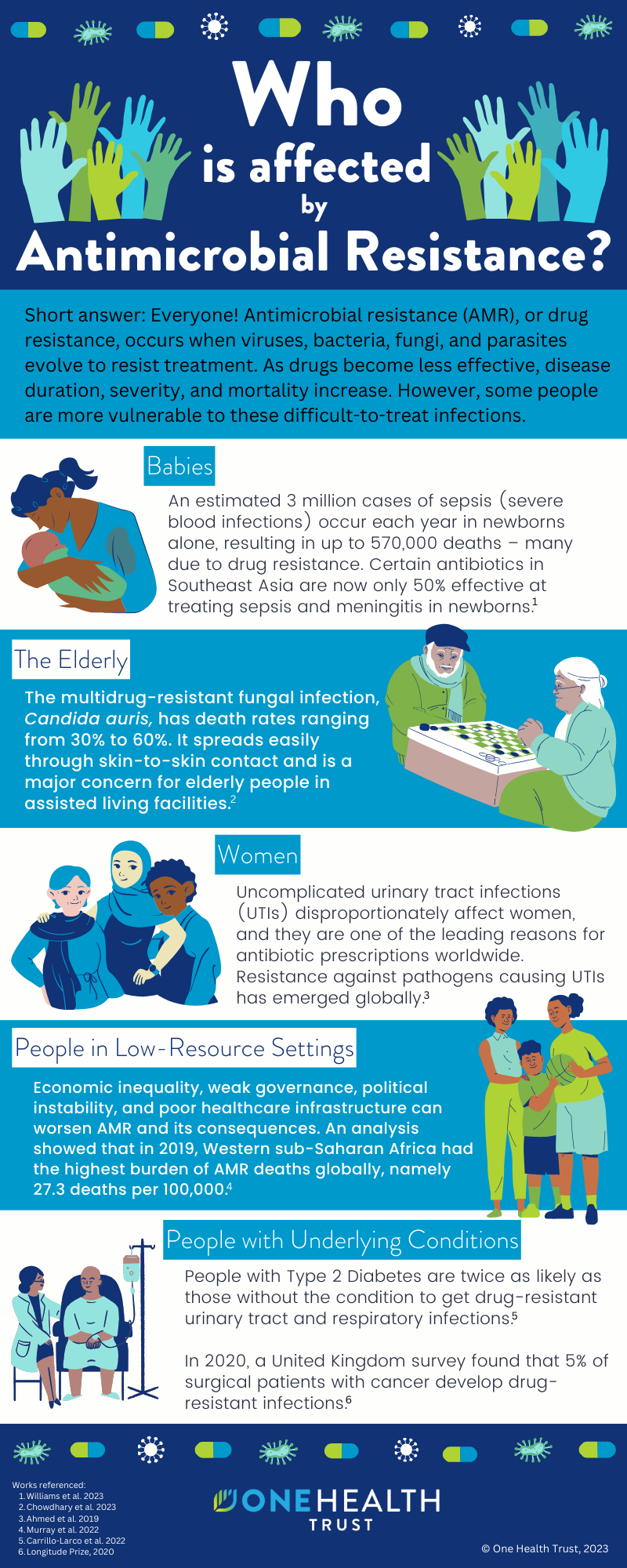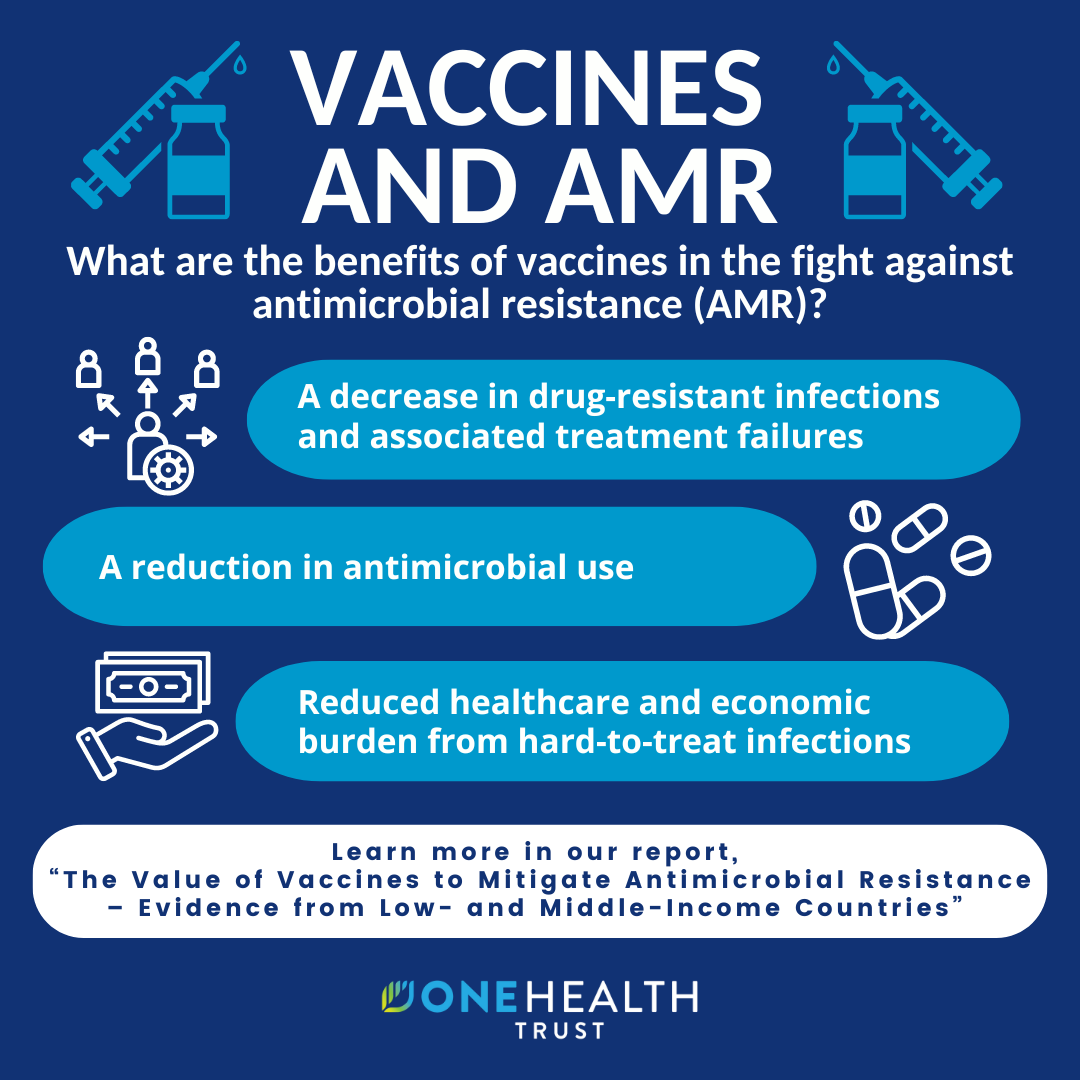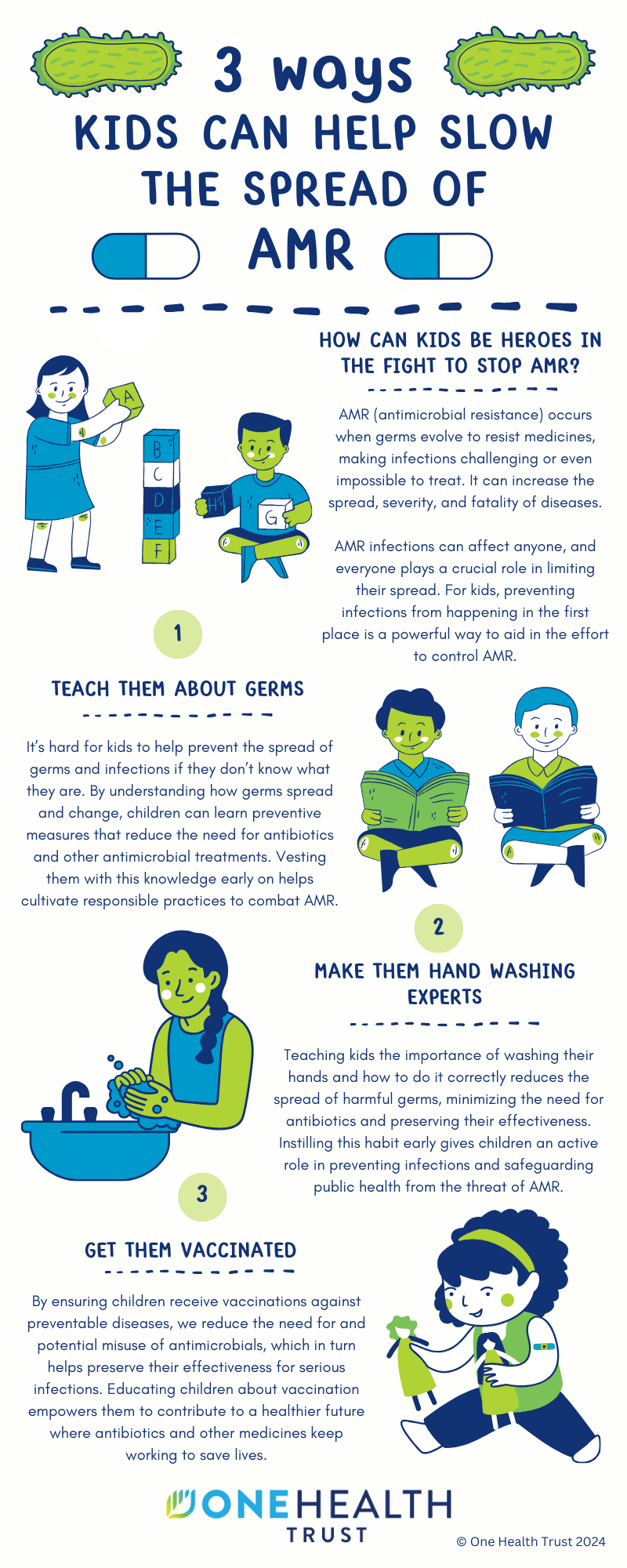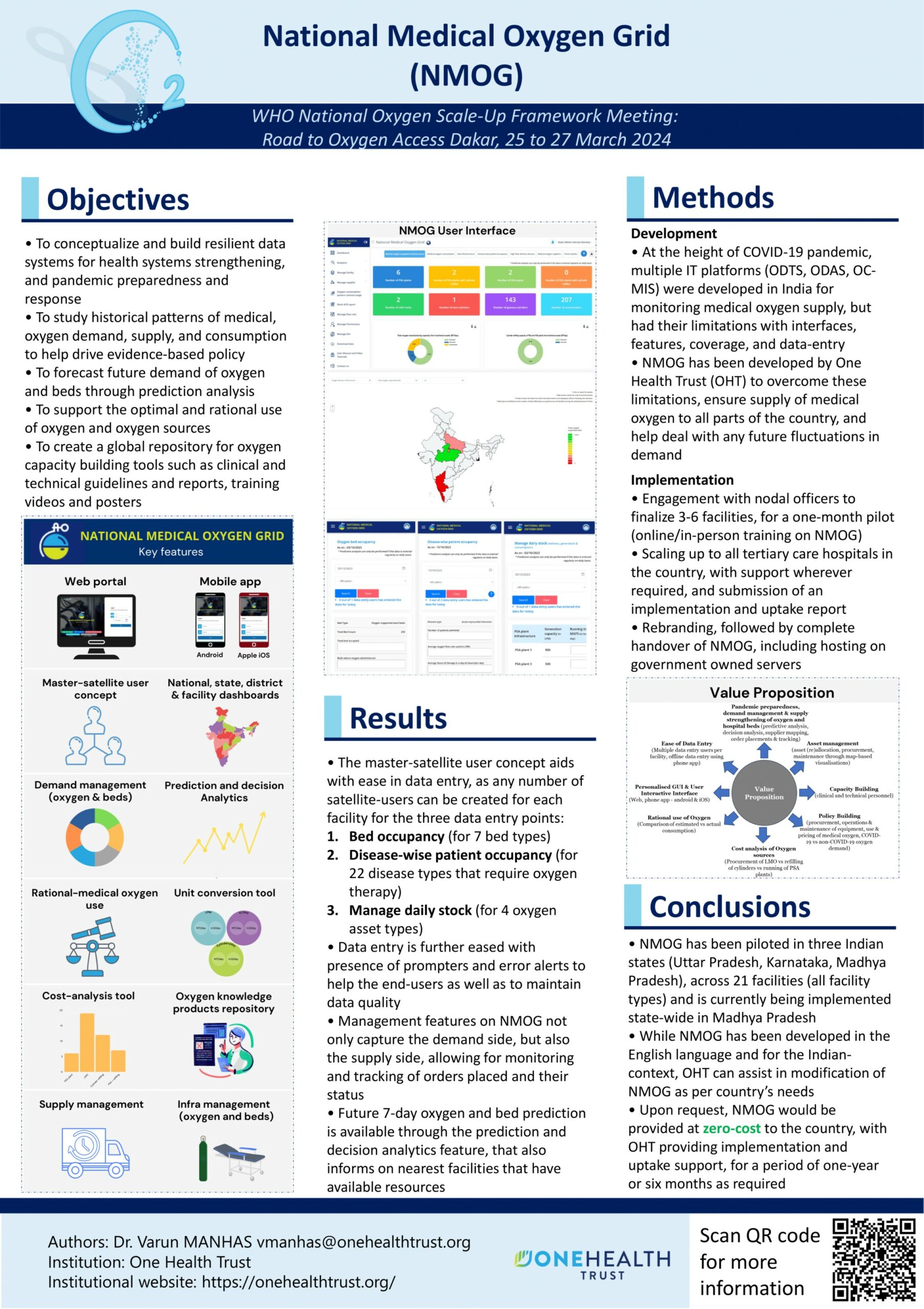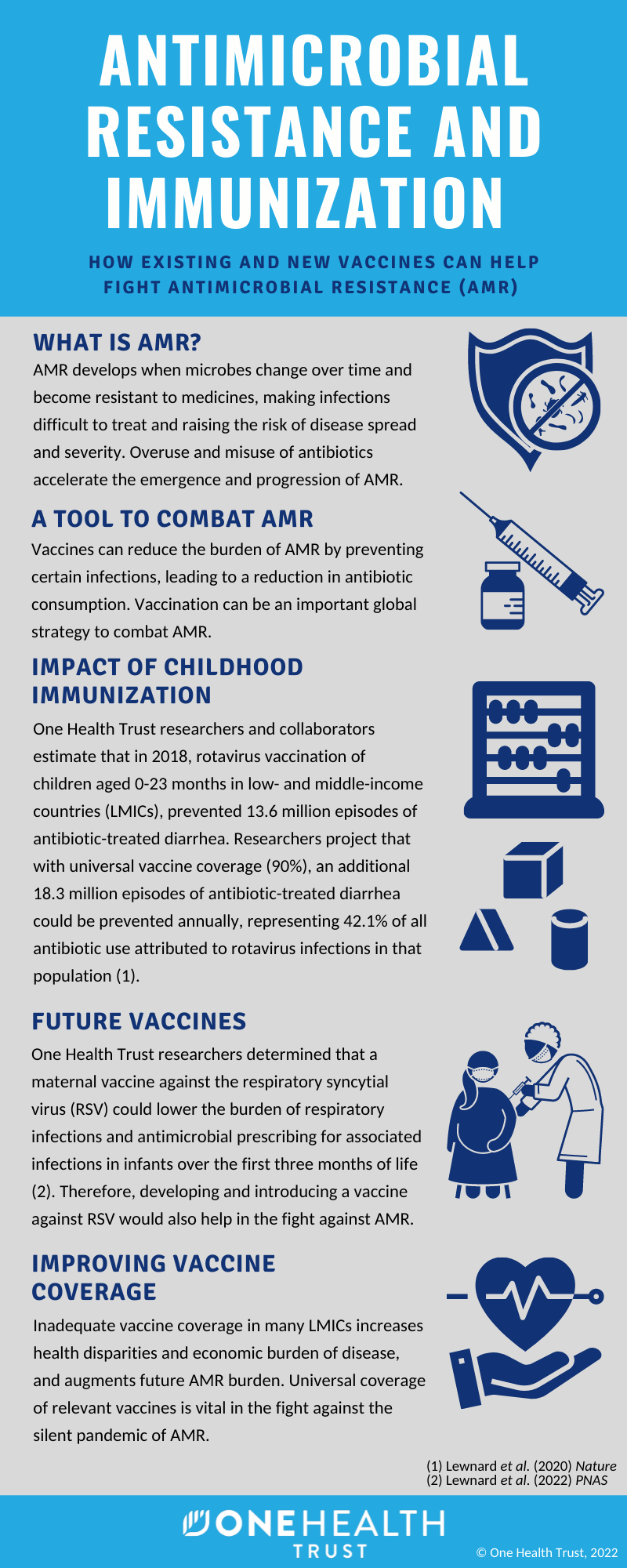
May 17, 2022
How Existing and New Vaccines can help fight antimicrobial resistance (AMR)
What is AMR?
AMR develops when microbes change over time and become resistant to medicines, making infections difficult to treat and raising the risk of disease spread and severity. Overuse and misuse of antibiotics accelerate the emergence and progression of AMR.
A tool to Combat AMR
Vaccines can reduce the burden of AMR by preventing certain infections, leading to a reduction in antibiotic consumption. Vaccination can be an important global strategy to combat AMR.
Impact of Childhood Immunization
One Health Trust researchers and collaborators estimate that in 2018, rotavirus vaccination of children aged 0-23 months in low- and middle-income countries (LMICs), prevented 13.6 million episodes of antibiotic-treated diarrhea. Researchers project that with universal vaccine coverage (90%), an additional 18.3 million episodes of antibiotic-treated diarrhea could be prevented annually, representing 42.1% of all antibiotic use attributed to rotavirus infections in that population (1).
Future Vaccines
One Health Trust researchers determined that a maternal vaccine against the respiratory syncytial virus (RSV) could lower the burden of respiratory infections and antimicrobial prescribing for associated infections in infants over the first three months of life (2). Therefore, developing and introducing a vaccine against RSV would also help in the fight against AMR.
Improving Vaccine Coverage
Inadequate vaccine coverage in many LMICs increases health disparities and economic burden of disease, and augments future AMR burden. Universal coverage of relevant vaccines is vital in the fight against the silent pandemic of AMR.
1) Lewnard et al. (2020) Nature
2) Lewnard et al. (2022) PNAS

